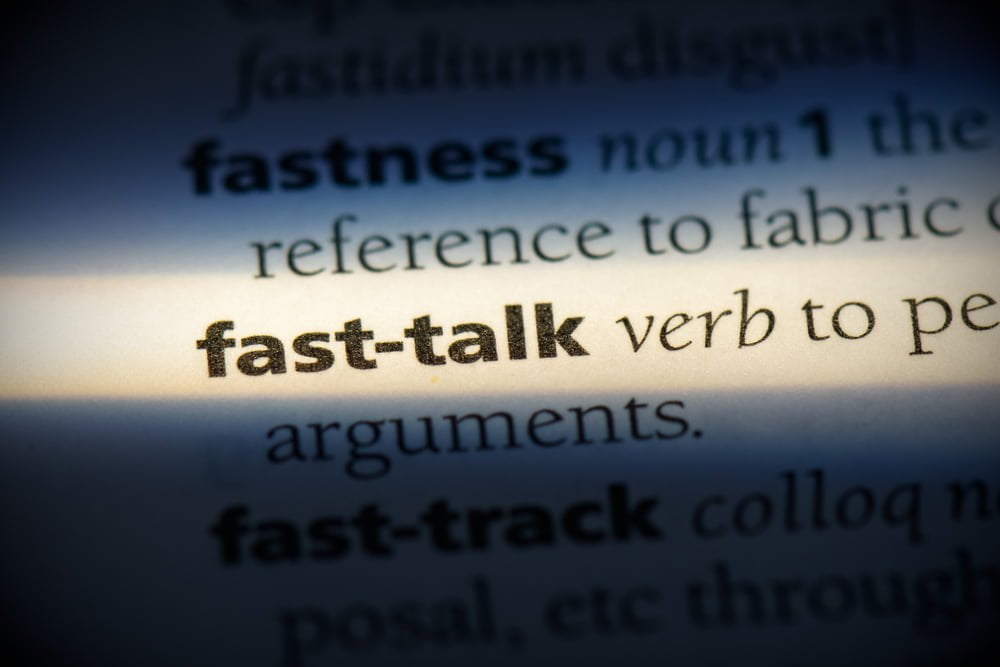Cluttering speech meaning
What is cluttered speech? In cluttering the speaker’s language is typically perceived as too fast overall, too irregular, or both. International experts agree that cluttering (speech) is something completely different from stuttering. According to the latest estimates, cluttering is as common as stuttering. It is not for nothing that cluttering has been included as a stand-alone condition in the World Health Organization’s (WHO) classification since 2007. But what, exactly, is cluttering? This section tells you all about “cluttering speech meaning”.

Stuttering speakers usually know what they want to say, but struggle to get their words out (they tend to have tensed blockages, like in “A-A-Apple”. In cluttering speakers this works the other way around: because their language planning is often not yet complete, they may have difficulty deciding what to say exactly and how to express themselves. This essential difference can be traced back to distinctive neurological processes. Stuttering is seen as a speech motor defect (the co-ordination and timing of the muscles of speech) and cluttering is viewed as a defect in the timing and planning of language. Both conditions have their own specific symptoms and require different treatment. It is important to mention that in addition to stuttering and cluttering there is also a mixed form, called clutter-stuttering. Someone who clutter-stutters shows features of both disorders.
The essence of cluttering speech: what is it?

Cluttering impacts the fluency and/or intelligibility of the speech. At first notice, the disfluencies that occur in cluttering resemble those of stuttering. Yet in reality they are (very) different and have a different cause. The disfluencies of cluttering arise as a result of two things: too high a speech rate/ difficulty controlling the pace of speaking, and disorganized planning of language. By language planning we mean: determining what you are going to say, the structuring of your message and the structuring of sentences. Cluttering speakers often indicate that their head is full of thoughts. If they do not have their language planning in order, they will soon stumble over their words.
This disrupts communication with others. In general, the speech of cluttering speakers sounds jerky, messy, or unclear. The disfluencies in cluttering are different in nature from those in stuttering. Cluttering symptoms are also called “nonstuttering-like (typical) disfluencies”: they are glitches that everyone shows from time to time, except cluttering speakers produce them a lot more frequently than typical speakers or people who stutter.
Symptoms of cluttering speech
The pace at which cluttering speakers talk is almost always too high and/or irregular, the latter meaning that sudden accelerations (spurts) occur in their speech frequently. In addition to this too high a speech rate, one or more of the following characteristics must be present:
- High frequency of normal disfluencies, such as repetitions (‘I went, I went, I went’ …) sentence revisions (‘I cycled, uh … I walked home’), or the wrong selection of words (‘Take a seat in that chair , uh … bank ‘).
- Wrong use of pauses (too few, too short, too many, too long or at incorrect places in a sentence), syllable stress and disturbed rhythm of speech
- Errors in word structures caused by collapsing or omitting of syllables (“aminum” for “aluminum”).
In addition to these main characteristics, one or more secondary symptoms often occur in the speech of cluttering speakers, such as:
- Filler words like “uhm,” “you know,” “well,” “like”, and “actually”
- Monotone way of speaking
- Poor articulation/ mumbling
- Speaking too loudly or softly (e.g. strong decrease of volume at the end of a sentence)
- Verbosity
- Word finding difficulties
Next to that there are symptoms that exist outside of someone’s speech. Read more on the meaning of cluttering.
Types of cluttering
Cluttering can be divided into 2 different types, each having its own characteristics. Both types of cluttering may occur within the same person.
Syntactic cluttering
Symptoms like sentence revisions, filler words and repetitions damage the structure of your sentences. They overturn the logic of your story, so that people have difficulty following you. These symptoms refer to what is known as syntactic cluttering, that comes from ”syntaxis”, the structure of sentences. They impact the fluency of the speech.
Phonological cluttering
Symptoms like collapsing or omitting syllables, poor articulation or misspeaking (errors in word structure) damage the structure of words. These have consequences for the intelligibility of someone’s speech. This is also called phonological cluttering.
Causes of cluttering

Lack of inhibition
We know from research that cluttering speakers have a so-called inhibition deficit: once they have started speaking, it can be difficult for them to keep their speech rate in check, and even to stop speaking. There is evidence that this inhibition problem originates in the brainstem, the part of the brain that controls the central nervous system.
Heredity
Cluttering has a clear hereditary component. About 85-90% of the cluttering speakers have a family member with a congenital fluency disorder, such as cluttering or stuttering.
Relations with other conditions
Scientific research shows that cluttering has strong correlations with, among other disorders, learning difficulties and ADHD. In people with these conditions cluttering exists more than averagely. To be clear, this does not mean that if you clutter you will have learning difficulties or ADHD per se. Cluttering and other related disorders can easily exist separately.
Do not confuse with…
Cluttering should not be confused with a language development disorder (LDD). People with a language development disorder also have problems with planning their language at a lower speech rate. For that same reason, cluttering also should not be seen as an articulation defect: people with this condition also experience articulation problems at a low rate of speech.
Central themes in cluttering speech
Time
Given the poor ability of language planning in cluttering speakers, the recurring motif in cluttering is time. By taking sufficient time before, during or after speaking, cluttering speakers enable themselves to complete their language formulation and prepare their articulation. Taking time can make a world of difference; the difference between speaking fluent and cluttering.

Concentration
In order to better express themselves, a high level of concentration for cluttering speakers is key: if they focus enough on their way of speaking, the fluency or intelligibility of their speech will immediately improve.
Communication
Given the fact that most people are unfamiliar with cluttering, it is essental that this topic is shared with others. Today, still many “stuttering speakers” are out there who do not know themselves that they actually clutter, and therefore do not receive the proper treatment. It is high time to change this. We from Too fast for words also offer personal coaching.
How to respond to a person with cluttering
Do not tell the people who clutter to slow down, to speak clearly, or to think about what they want to say. Instead, try to slow down yourself and increase your own pauses. If you did not understand the cluttering speaker, respond with what you did understand and ask for clarification of what you did not. You show that you are interested in what the person is saying, not how the person is speaking. He/she can then understand what needs to be changed. Understand that a person with cluttering is not always aware of their fast speech rate or their difficulties.


